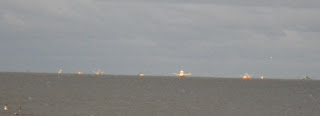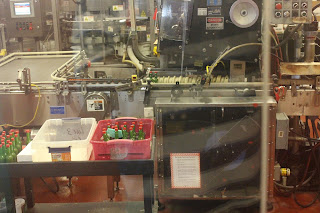The parking lot was full, and so we parked a couple blocks
away at the community center. Of course as we reached the start of the birding
trail several vehicles had left but no matter. Starting down the trail. I
stopped to take images of several flowers.
Reaching the board walk we didn’t see any unusual birds
until we reached the second set of mist nets. Two birds had just gotten tangled
in the gossamer net and lay helpless. Entangled in the net they struggled until
the bird bander arrived He checked their health, took measurements, and then banded and then released them.. One of the two birds was a new one for us, an oven bird. Our
bird list, since we began traveling, now stands at two hundred ninety-nine!
Others saw a summer tanager and some indigo buntings, but we
weren’t so lucky. The Island has been so dry that there is a dearth of
blackberries and mulberries. These two plants hold the birds, as they eat their
fill and recover from their arduous trip across the Gulf of Mexico.
One of the highlights of visiting Louisiana is of course the
cuisine. One of my favorites is crawfish and luckily one of the places on the
island was cooking crawfish and crabs. We didn’t care about the crabs, for us
the mud bugs were the best thing on the menu.
We bought five pounds of them. Meanwhile we had boiled two
pounds of shrimp we had bought from the shrimp dealer. Add some corn on the
cob, remoulade sauce, and boiled red potatoes, and need I say more, (I do have
a friend who usually eats five pounds by himself, I don’t know how he keeps so
thin).
Another night and my brother in law Gary called to tell us
the specks and keeper white trout were biting.
Being so full of tasty food, I crashed on the sofa and so the next
evening Renita and I went to the place. Unfortunately, the wind had shifted and
the area was muddy, with high waves.
It was unfishable so we drove to the State park fishing
dock. I baited my hooks and threw out the poles but nothing bit. It didn’t
matter as we enjoyed the sun set. The last rays of the sun caught the fort on
grand Tere, and highlighted the shrimp boats. They were all lined up in Barataria Pass, and below us line after line of brown pelicans flew to their roosting
site.
It was a special time for both of us, sunsets usually are,
and it made us sad to be leaving. Tomorrow we head to Livingston, before flying
back to Florida to watch our daughter graduate. From there we will fly back and
then head north by northwest, looking forward to Wyoming. Clear skies



















































